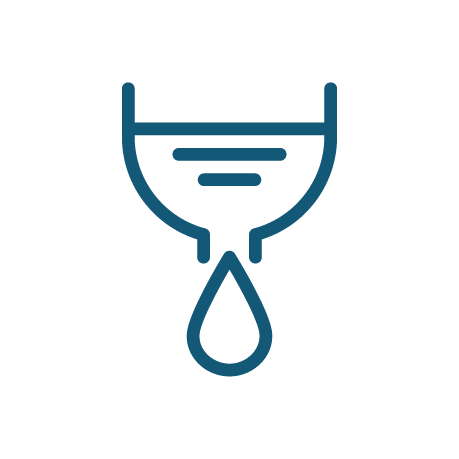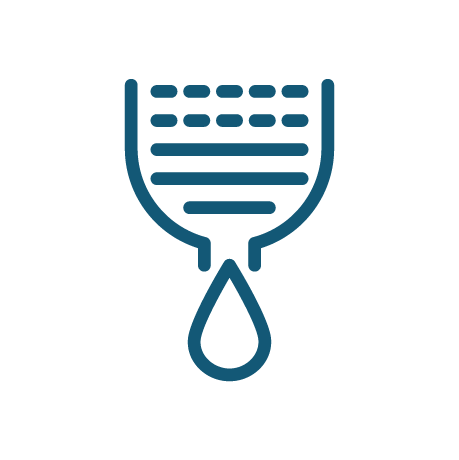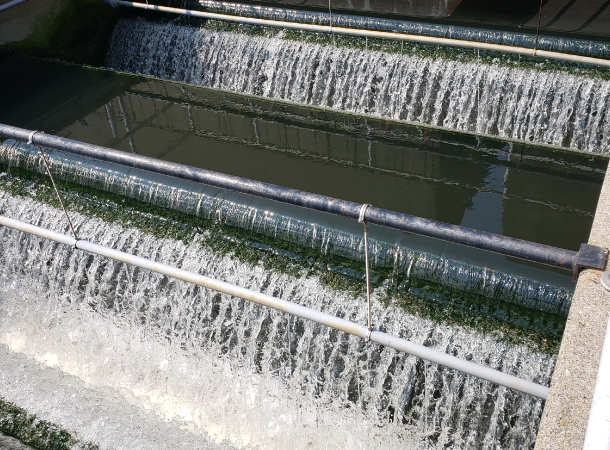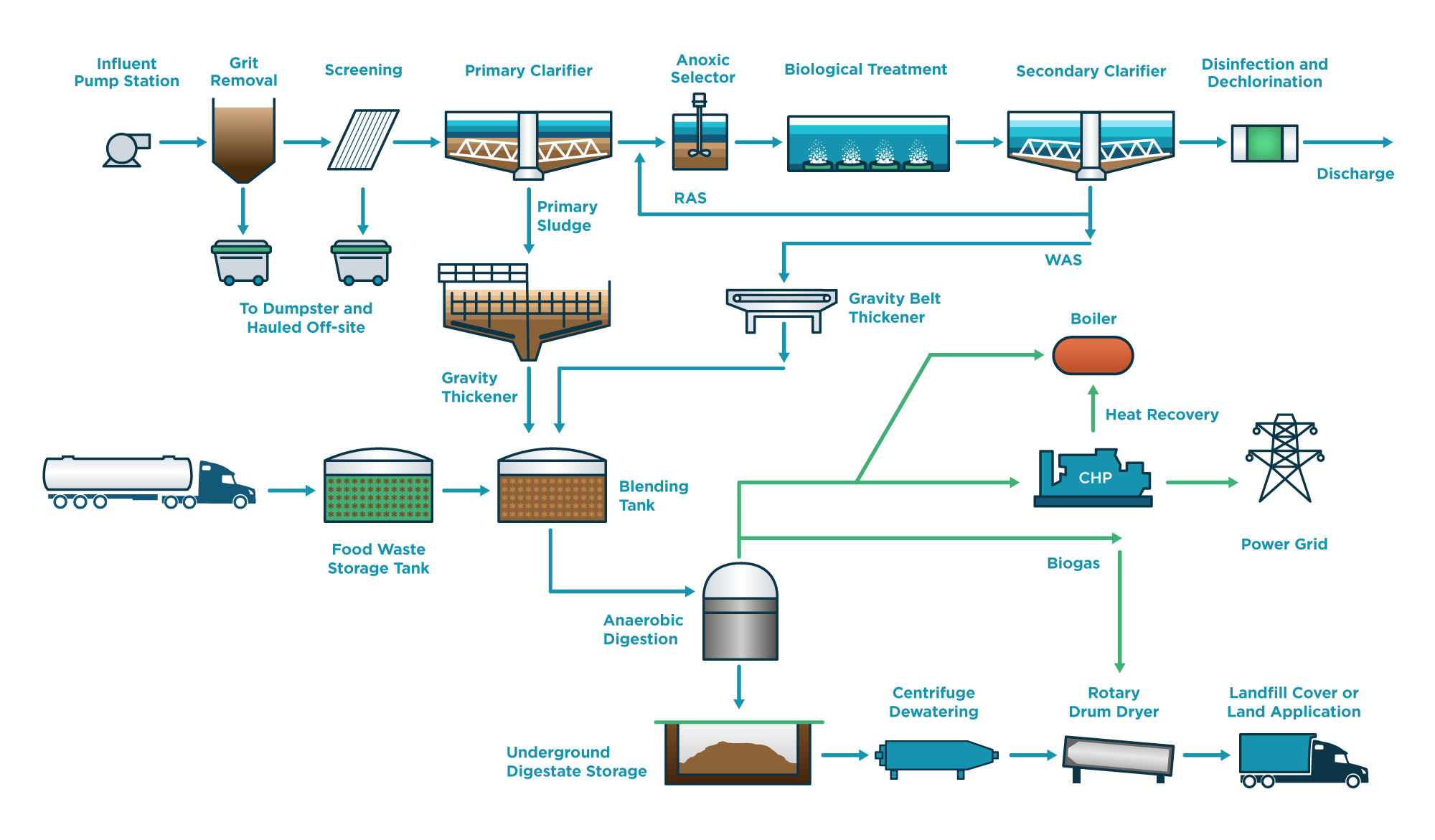 1. Collection and Transportation
1. Collection and Transportation
First, we collect the wastewater from our member communities in large diameter pipes. This “intercepted” wastewater – that historically flowed directly into the River, is now provided with treatment beforehand to protect the environment.
 2. Preliminary/Primary Treatment
2. Preliminary/Primary Treatment
Wastewater passes through chambers that are designed to drop out sand and gravel. Next, it flows through a series of rotating screens which remove rags and plastics and a pair of 175 foot diameter tanks which settle out heavy solids.
 3. Biological Treatment
3. Biological Treatment
We utilize a biological treatment system that further cleans the remaining materials such as suspended solids and organic matter from the wastewater stream.
 4. Disinfection and Dechlorination
4. Disinfection and Dechlorination
Next, we kill microorganisms and eliminate excess chlorine to maintain water quality as it flows from the treatment plant and back into the river. This ensures nothing capable of causing environmental harm remains in the water, maintaining the health of the Merrimack River.
 5. Biosolid Management
5. Biosolid Management
After the water has passed through, we collect the biological solids left over in our tanks where our anaerobic digesters thicken and process these solid wastes into nutrient-rich organic biosolids. GLSD produces the highest quality, Class A biosolids, which are an excellent fertilizer filled with valuable micronutrients.

